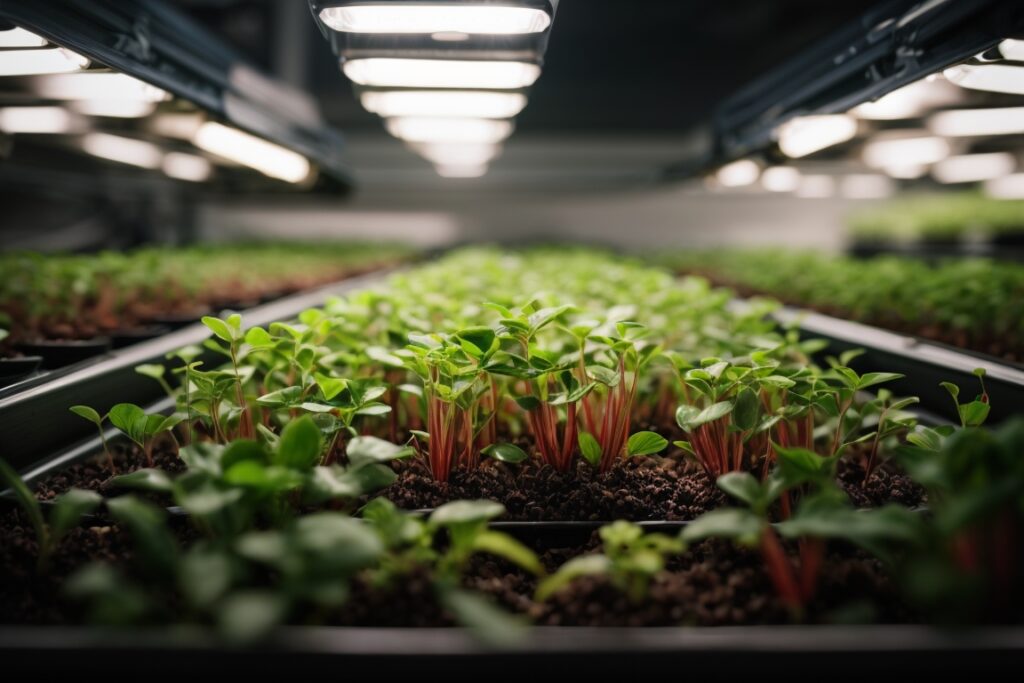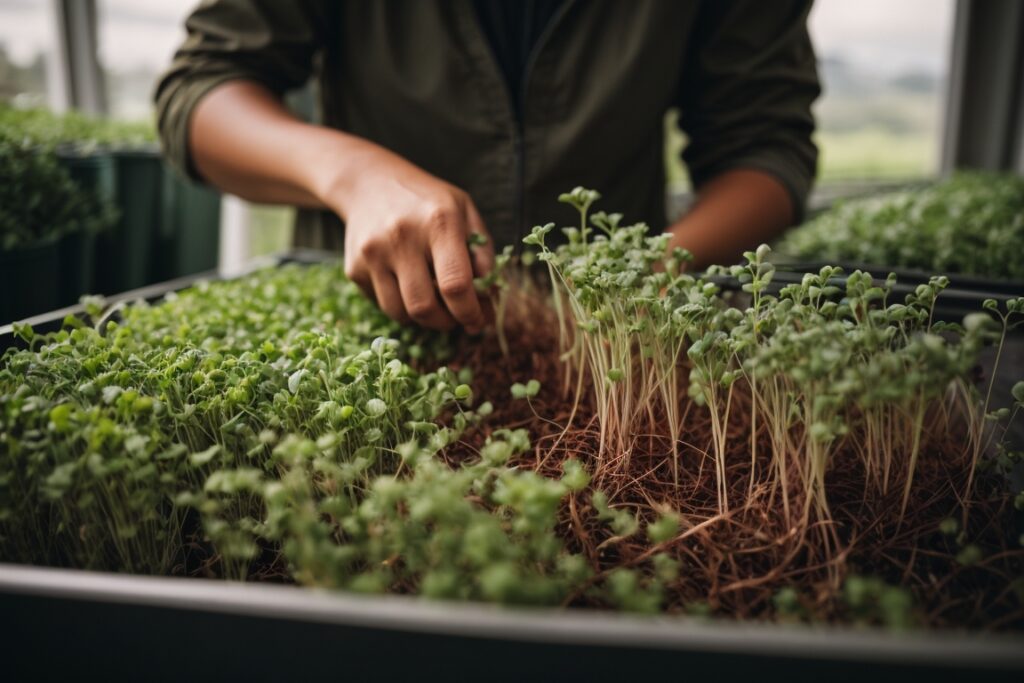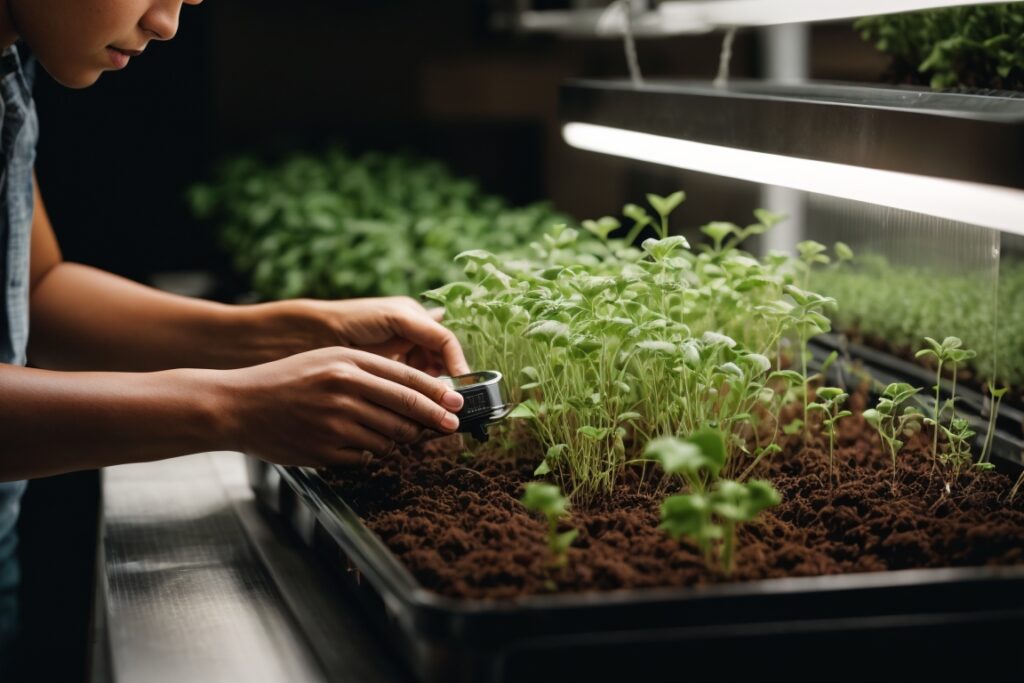How to grow microgreens indoors?
When it comes to growing microgreens at home, I’ve discovered that these tiny greens are not only incredibly flavorful but also quite nutritious. Here are some essential tips that I would like to share with you. I hope these suggestions can help you cultivate healthy and vibrant microgreens right in your own kitchen.
Table of Contents
1. Choose the Right Seeds
First and foremost, I suggest choosing the right seeds to kickstart your microgreen journey. Look for seeds labeled specifically as “microgreen” varieties, for example, include arugula, radish, broccoli, and basil. Be sure to opt for fresh, high-quality seeds for the best results.

2. Use the Right Growing Medium
In my experience, microgreens thrive when grown in a lightweight, soilless growing medium. You can either choose peat moss, coconut coir, or a specialized microgreen growing mix. Here are some benefits of different options:
a. Peat Moss
Peat moss is lightweight, holds moisture well, and provides good root aeration. Its slightly acidic nature suits certain microgreens like radishes. It’s also affordable and easy to find.
b. Coconut Coir
Coconut coir, made from coconut husks, is eco-friendly and sustainable. It retains water effectively while allowing roots to breathe. Its neutral pH makes it versatile for various microgreens.
c. Specialized Microgreen Mix
A specialized microgreen mix is like a tailored suit for your greens. It offers the right blend of nutrients and moisture retention, simplifying your growing process for consistent results.
Consider your preferences and the microgreens you plan to grow. Each medium has its advantages, so choose the one that suits your goals. Regardless of your choice, keep the medium moist but not waterlogged to create an ideal germination environment. With the right growing medium and proper moisture, you’ll set the stage for successful microgreen cultivation.
3. Proper Sowing Depth
When sowing microgreens, I recommend a light touch. These seeds are small, so there’s no need to bury them deep. Simply sprinkle them evenly on the surface of the growing medium. I lightly press them down with a flat surface to ensure good seed-to-soil contact, but I make sure not to bury them too deeply.

4. Adequate Light
Microgreens crave sunlight, and in my opinion, providing them with plenty of light is essential. I like to place my trays near a sunny windowsill or use artificial grow lights. Aim for about 12-16 hours of light per day to encourage healthy growth and vibrant colors.

5. LED Grow Lights Advantages
From my experience, LED grow lights are a game-changer for indoor microgreen gardening. They are energy-efficient, produce much less heat, and you can choose the right spectrum of light for optimal growth. You may consider using LED grow lights to ensure your microgreens receive consistent and healthy light.

6. Maintain Consistent Moisture
Tracking moisture levels is key to success. My approach is to gently mist the soil surface with a spray bottle. I strive to keep it consistently moist but never soggy. From my experience, overwatering can lead to mold and disease, so finding that balance is crucial.

7. Harvest at the Right Time
Knowing when to harvest your microgreens is crucial for flavor and nutrition. In my opinion, they’re at their prime when they’ve developed their first set of true leaves. Using scissors, I suggest snipping them just above the soil level. Trust me; their fresh, tender flavor is worth the wait!

8. Frequent Conditions Monitoring
For successful microgreen cultivation, it’s important to monitor environmental conditions. I use a thermometer to keep an eye on the temperature and ensure it stays within the ideal range for my chosen microgreens. Additionally, I check the moisture levels regularly to make adjustments as needed. Proper ventilation is also essential to prevent mold and promote healthy growth.

9. Experiment with Different Varieties
Lastly, I encourage you to have some fun and experiment with various microgreen varieties. Each one offers a unique taste and texture that can elevate your meals. Trying out different seeds can add an exciting twist to your indoor gardening journey.
Growing microgreens indoors has been a rewarding and flavorful experience for me. I hope my personal tips, including the advantages of LED grow lights and monitoring environmental conditions, will help you get started and cultivate vibrant microgreens right on your kitchen counter. Happy growing!




